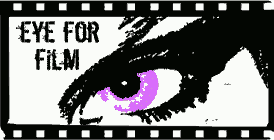Eye For Film >> Movies >> Operation Bogeyman (2025) Film Review
Operation Bogeyman
Reviewed by: Jennie Kermode

As director Simon Aeppli previously observed in the research project from which this film is descended, the 1970s was a period when people in the British Isles became obsessed with the occult. Strict adherence to Christian tradition was waning, neo-Paganism was on the rise, Hammer films dominated at the box office and the first stirrings of what would become the Satanic Panic, a decade later, were being felt. Meanwhile, at a military base not so far from Aeppli’s childhood home in Carrickfergus, British intelligence officer Colin Wallace had been tasked with sowing discord within the local population to make it easier to control. What better way to do so than by engineering a Satanic scare?
In this film, long in the works, Aeppli sets out to explore one of the strangest chapters in British military history, and to do so with due regard to the genuinely uncanny aspects of a landscape he knows well. We visit it at the outset and he points out the local landmarks, each with its own legends attached: the Titanic Museum, the studio where Game Of Thrones was filmed, the Knockagh Hill memorial to the fallen of the First World War in the form of an obelisk that towers over the town. Certain trees and rocks too, and the textures of it all. Moss on stone; mold and decay; lichen penetrating the rock. Aerial shots of woodland, fields and towns also have an organic quality, fuzzy and corrupted at the edges, blurring into one another. It’s easy to see how such a place could be rife with superstition.
Back in the Surrey town of Farnham, where he lives today, there’s a presence of a different kind. As he settles down to work, a chinook flies overhead. We never get far away from demonstrations of the power of the British establishment, so it’s a curious thing to see it looking for advantage in an older, very different kind of power, and more curious still when we get an admission that even those involved in creating the scare felt a shudder sometimes when out in the wild places on the edges of the town by night.
Aeppli goes to some trouble to explain what it was like back then. A time when Hammer films and porn films were advertised in the same newspapers, alongside adverts for spiritual readings, whilst the headlines reported rumours of sinister gatherings, robed figures seen engaged in peculiar rituals, whispers of sacrifice. He imagines Wallace working like a screenwriter, tweaking the evolving narrative, determining where it should go next – until there came a twist that nobody had predicted, and the Brits’ carefully contrived mystery became connected in the public imagination with a real life tragedy: the disappearance of a ten-year-old boy.
For all that this is an essay film, there’s plenty of visual interest to it. The director’s own photography sits alongside archive images and newspaper pages, and clips from the films that dominated the popular mindset. We see the little green book that Wallace created as a cultural manual for British soldiers stationed in Ireland, along with local curiosities that might have made them nervous themselves. The weight of lore that Aeppli assembles site, of course, alongside those strains of religious and cultural lore that contributed to the heavy loss of life in that decade, and in that context it is telling to reflect of the speed at which people fell for the Satanism hoax.
It is believed that the last witch trials in Ireland took place in Carrickfergus in 1711 (England’s persisted for rather longer). It’s said that there are places and times when the veil between the worlds is thin – but, perhaps, not so thin as that between rational social behaviour and the superstitious thinking that feeds mob violence. Aeppli’s work brings scams, superstition, abuses of power, real world horrors and the magic of storytelling together in one heady brew. Screened as part of Docs Ireland 2025, it’s one you’ll want to look out for.
Reviewed on: 26 Jun 2025















